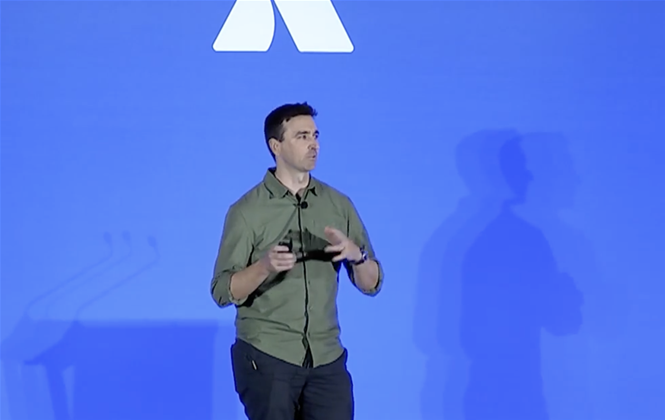TPG Telecom Revamps Organization to Integrate Cloud and Cybersecurity Services
We independently review everything we recommend. When you buy through our links, we may earn a commission which is paid directly to our Australia-based writers, editors, and support staff. Thank you for your support!
Quick Read
- TPG Telecom combines its cloud and cybersecurity teams into a new unit known as: Technology Security, Cloud & End to End Architecture.
- After the reorganization, General Manager of Technology Security, Lee Barney, will be leaving the company.
- This restructure is designed to enhance secure-by-design practices and promote the adoption of cloud security throughout the organization.
- This new unit is in line with the Australian Government’s cybersecurity strategy for essential infrastructure.
- The Cyber Centre of Excellence (CCoE) located in Sydney will maintain its collaborative efforts with industry and academic institutions.
TPG Telecom Restructures to Integrate Cloud and Cybersecurity Services

Leadership Change and Departure of Lee Barney
TPG Telecom has implemented a major organizational overhaul, merging its cloud infrastructure with its cybersecurity functions into a single entity named Technology Security, Cloud & End to End Architecture. This shift resulted in the exit of Lee Barney, who has been TPG’s General Manager of Technology Security for almost three years.
Barney announced his departure on LinkedIn, saying, “As the organization reshapes its leadership focus, I depart with the assurance that the team is well-equipped for the upcoming challenges.” Although TPG Telecom has yet to appoint a leader for the new unit, there are currently no plans in place to find a direct successor.
Strategic Consolidation of Cloud and Security Teams
The merger of TPG’s cloud and security teams is driven by the imperative to cultivate secure-by-design principles, a strategy strongly advocated by the Australian Government’s cybersecurity policies. By integrating these divisions, TPG seeks to enhance coherence between development and security, guaranteeing that new platforms and services are secure from the outset.
A representative from TPG Telecom informed TechBest, “We are uniting security and cloud to design and construct security-native cloud solutions and enhance security capability adoption throughout the organization.”
Alignment with the National Cybersecurity Agenda
This integration aligns closely with the government’s Cyber Security Strategy 2023–2030, which urges organizations in critical infrastructure sectors, such as telecommunications, to adopt layered defensive strategies and secure-by-design methodologies.
This strategy features initiatives such as six “Cyber Shields” aimed at safeguarding Australia’s digital infrastructure, emphasizing collaboration between the public and private sectors, making TPG’s strategic move both timely and well-executed.
The Function of the Cyber Centre of Excellence (CCoE)
During Barney’s stewardship, TPG’s Cyber Centre of Excellence (CCoE) was launched in Sydney and began operations in late 2023. The CCoE aims to identify and address vulnerabilities in telecommunication and IT systems through both offensive and defensive cybersecurity methods.
This facility hosts TPG’s red and blue cybersecurity teams and includes representatives from industry leaders like Ericsson, Nokia, and Tata Consultancy Services (TCS) on rotating 90-day assignments. In collaboration with the University of New South Wales (UNSW), the center also promotes academic partnerships focused on threat research and innovation.
TPG’s Forward-Looking Cybersecurity Strategy
Even though Barney’s departure signifies a pivotal moment, TPG Telecom’s commitment to cybersecurity continues to strengthen. The amalgamation of cloud and security functions is anticipated to enhance workflows, diminish silos, and bolster resilience against new threats. The future of this unit will likely place greater emphasis on automation, AI-driven threat detection, and comprehensive cloud-native security solutions.
Summary
TPG Telecom has redesigned its technology division to merge cloud and cybersecurity services into a unified, cohesive unit. This strategic initiative follows the exit of General Manager Lee Barney and mirrors wider trends in Australia’s critical infrastructure sectors towards adopting secure-by-design methodologies. With its Cyber Centre of Excellence and alignment with national cybersecurity objectives, TPG Telecom is positioning itself as a more agile and security-focused telecommunications provider in an increasingly complex digital environment.
Q: Why did TPG Telecom restructure its technology division?
A:
The restructure is meant to integrate cloud and cybersecurity teams to develop security-native solutions and enhance security adoption throughout the organization, in line with Australia’s secure-by-design strategy.
Q: What is the name of the new function?
A:
The newly formed organizational unit is referred to as Technology Security, Cloud & End to End Architecture.
Q: Who is in charge of the new function?
A:
Currently, TPG Telecom has not appointed a leader for the new function and has no immediate plans to replace Lee Barney.
Q: What impact did Lee Barney have on TPG Telecom?
A:
Barney was instrumental in establishing the Cyber Centre of Excellence, strengthening TPG’s overall security posture, and enhancing in-house cybersecurity capabilities during his time.
Q: What is the Cyber Centre of Excellence (CCoE)?
A:
Situated in Sydney, the CCoE is a facility focused on detecting vulnerabilities within telecom and IT systems. It hosts both red and blue teams, industry collaborators, and academic researchers working together to enhance cybersecurity outcomes.
Q: How does this restructuring connect with national policy?
A:
This restructure aligns with the Australian Government’s cybersecurity strategy, which promotes secure-by-design development and facilitates cooperation between public institutions and private enterprises.
Q: What are red and blue teams in cybersecurity?
A:
Red teams simulate actual cyberattacks to evaluate security systems, while blue teams protect against these threats to reinforce the organization’s defenses. Together, they elevate the security maturity of an organization.
Q: Will customers experience any changes due to this transition?
A:
No significant disruptions to customer services are anticipated. In the long run, customers may enjoy enhanced security and reliability in cloud-based offerings resulting from this integration.














